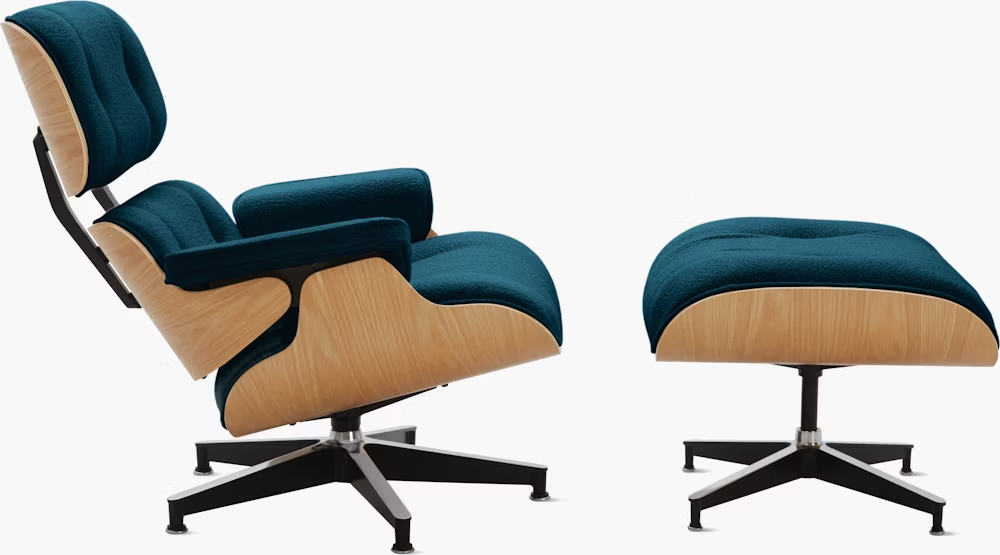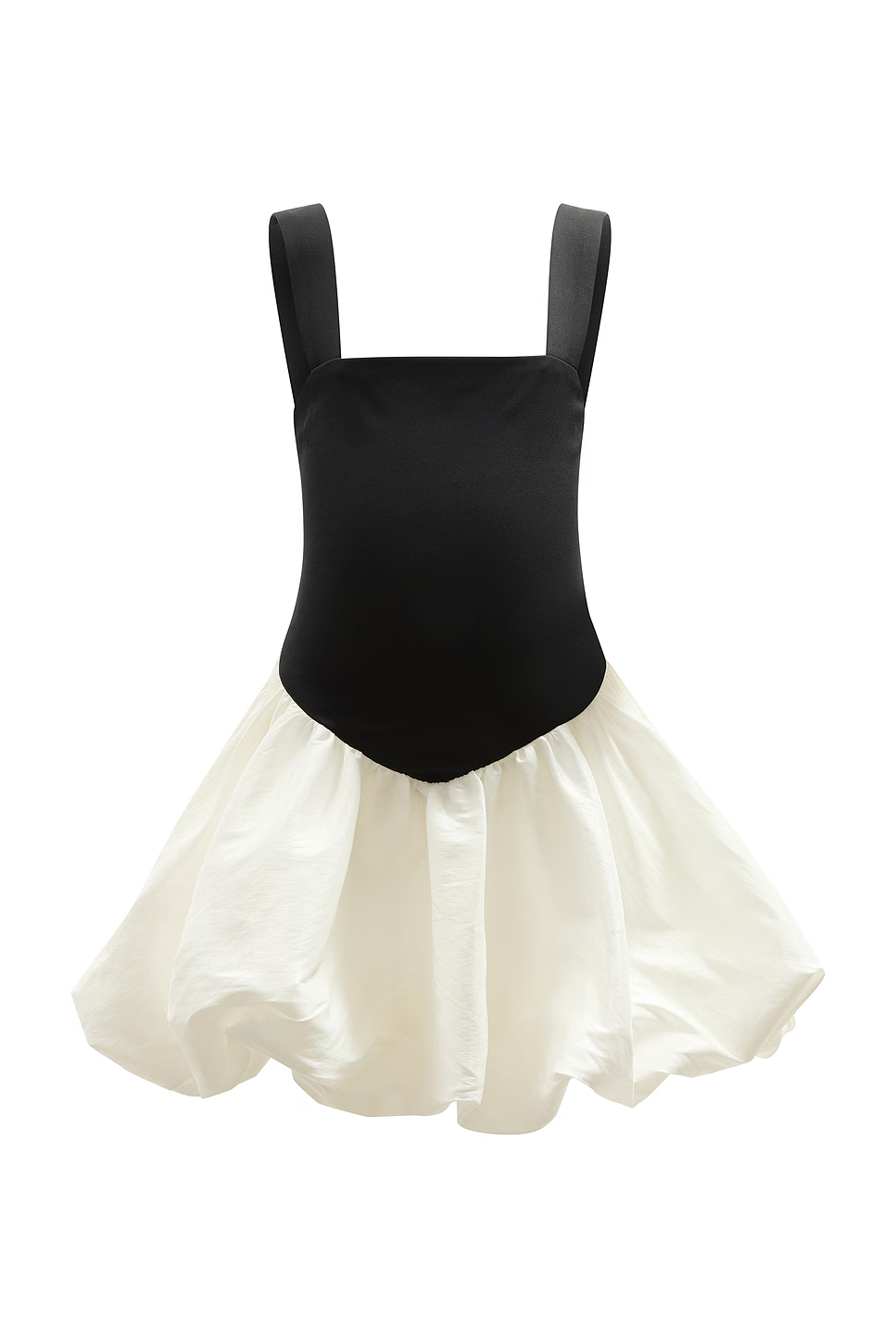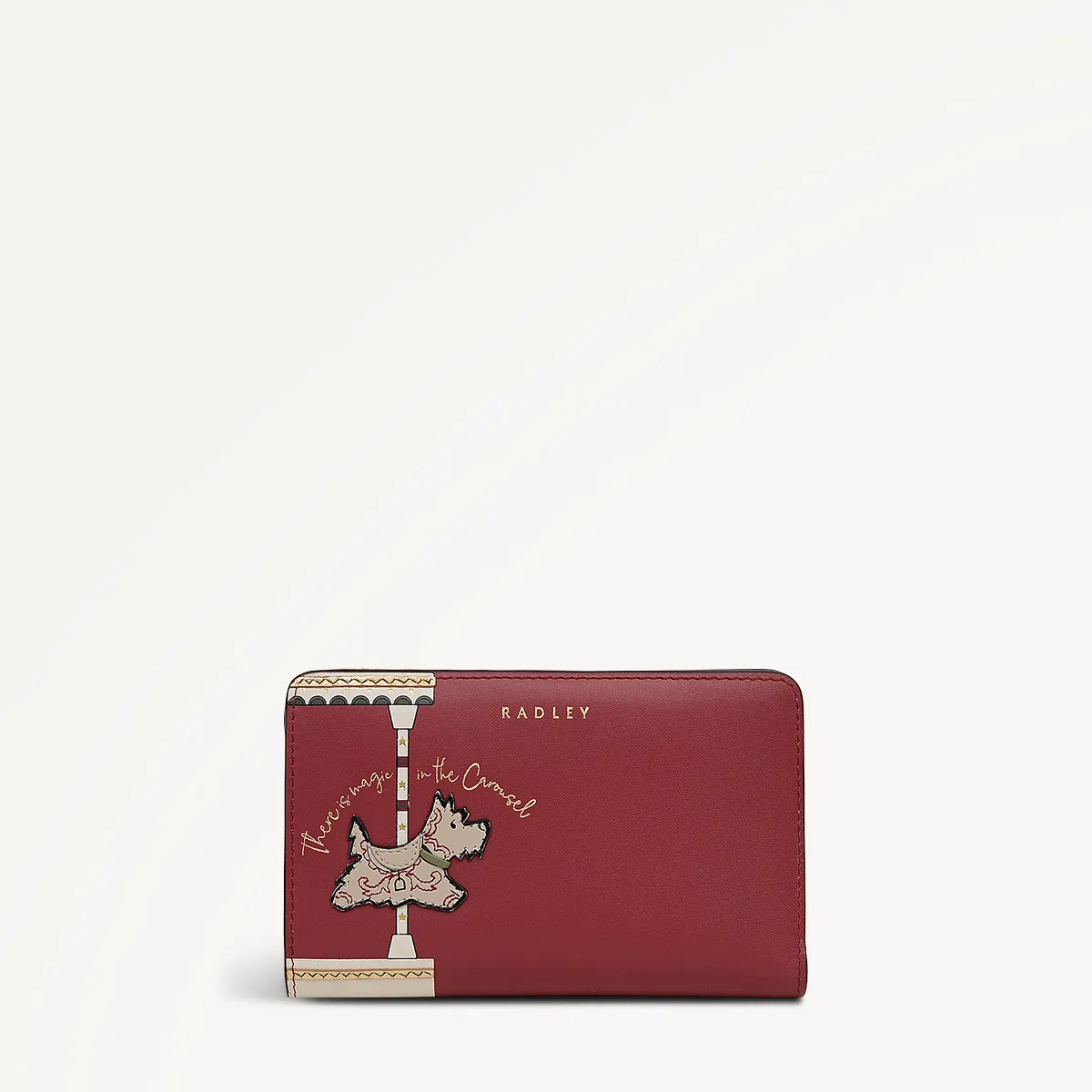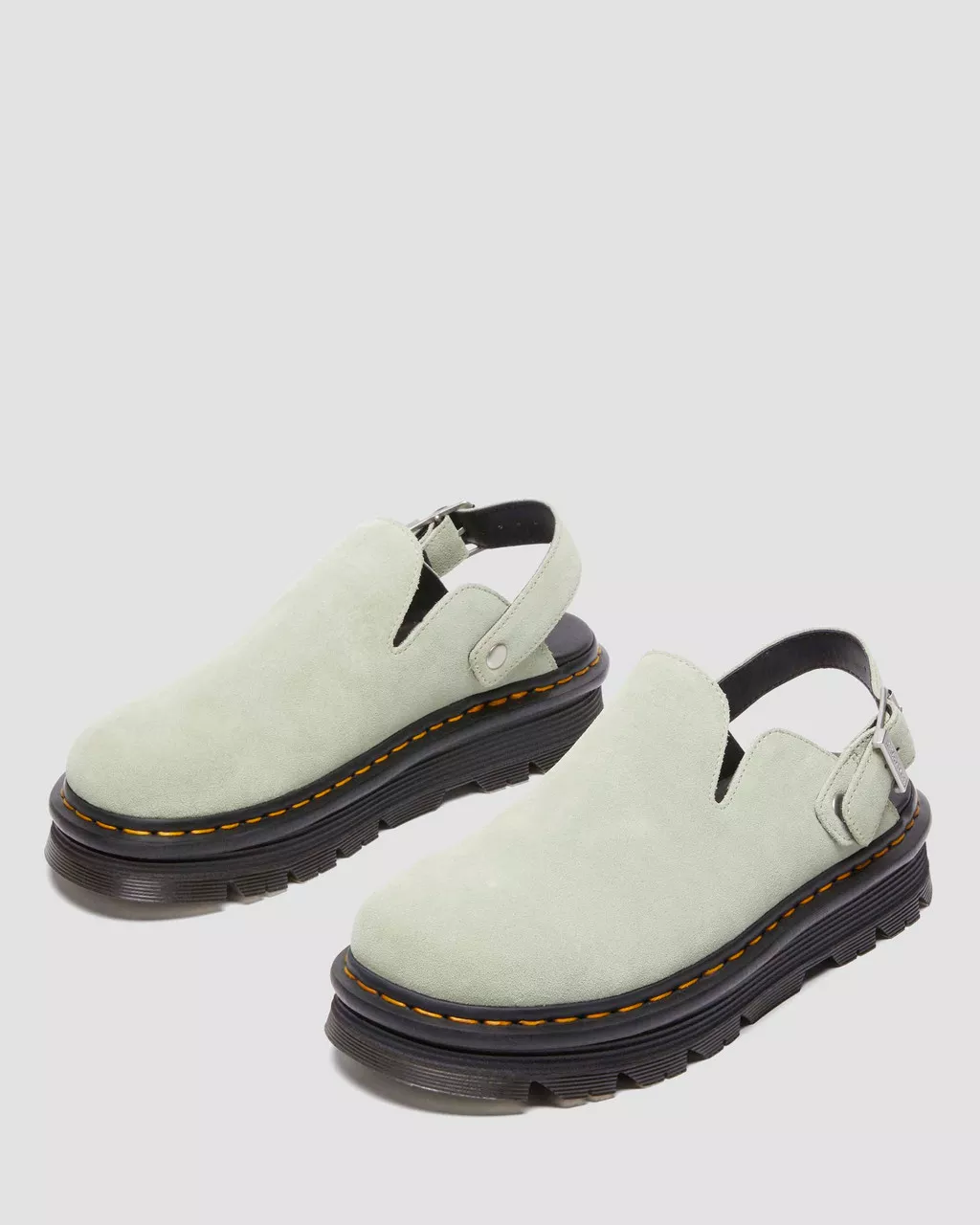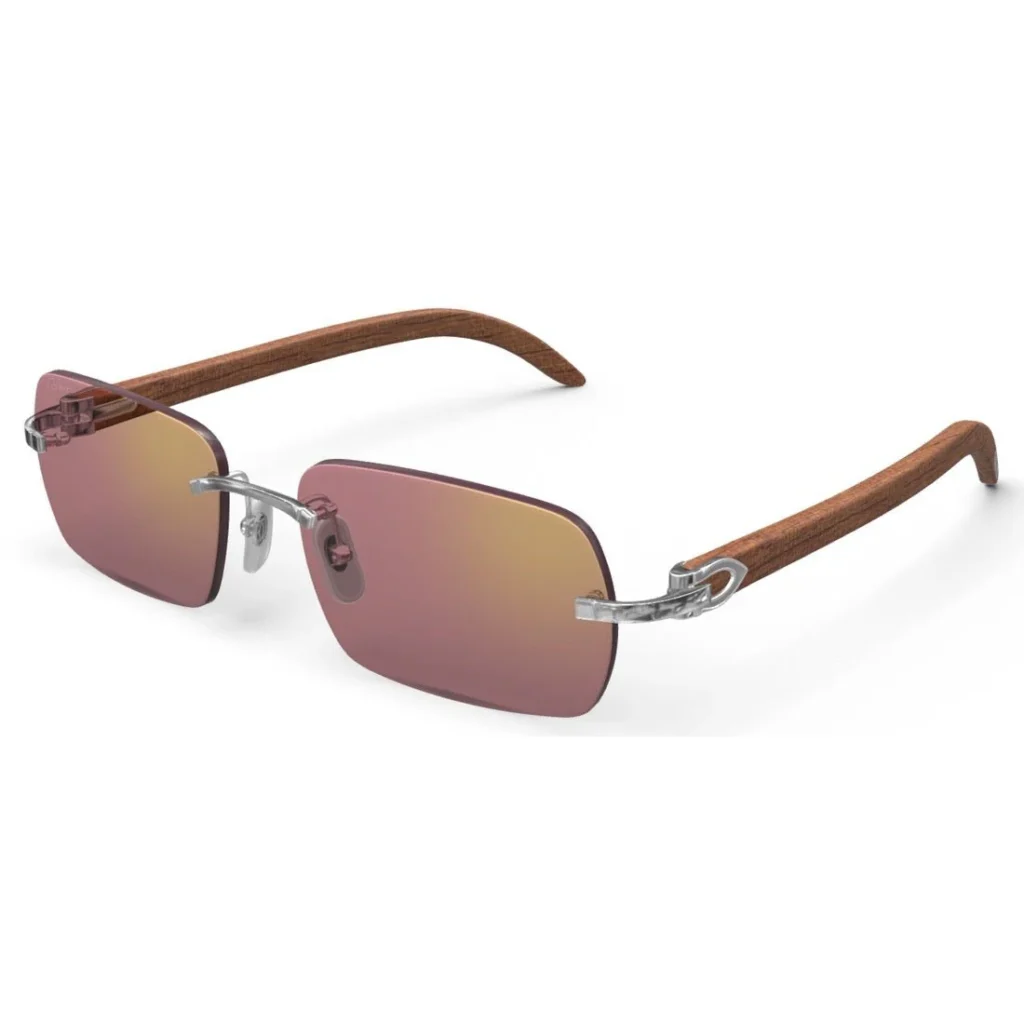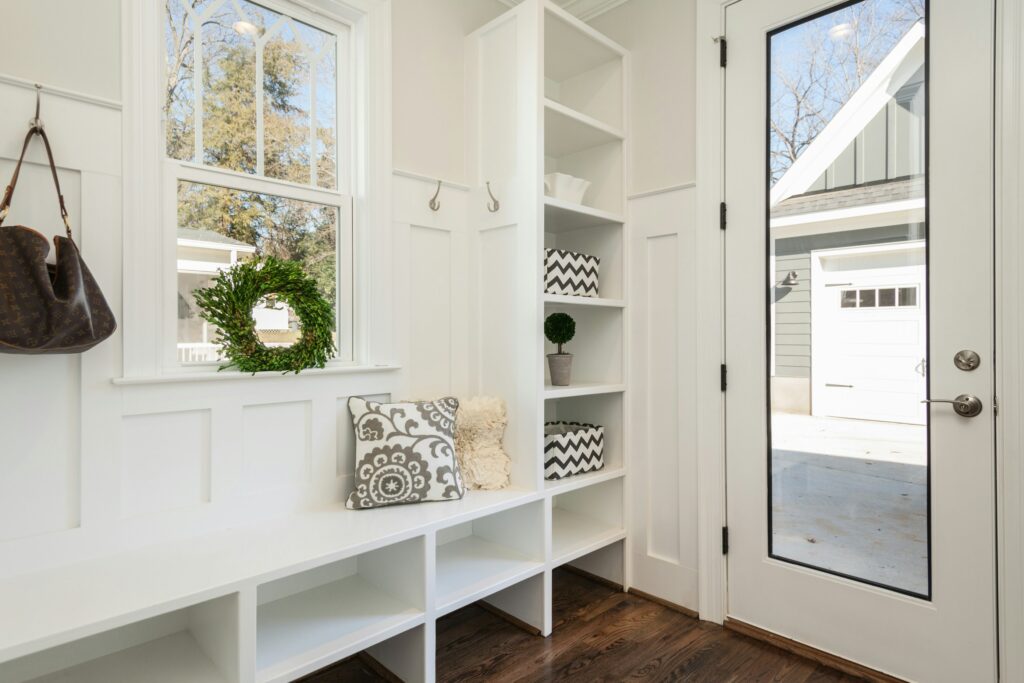Few pieces earn “instant architecture” status in a room. The Herman Miller Eames Lounge Chair and Ottoman is one of them: a sculpture you can live in. Designed to look like a well-worn baseball mitt, it balances plush comfort with crisp craft—layered molded plywood shells, supple leather cushions, and a swivel base that quietly rotates you toward the book, the view, or the conversation.
In this article, we’ll show you how to choose finishes (leather, veneer, base), place and light the chair for maximum drama and day-to-day ease, pair it with side tables and rugs, and care for it so it gets better with time. You’ll leave with ready-to-use layout recipes, a materials cheat sheet, and an easy maintenance routine that protects your investment.
Shop Herman Miller Eames Lounge Chair and Ottoman
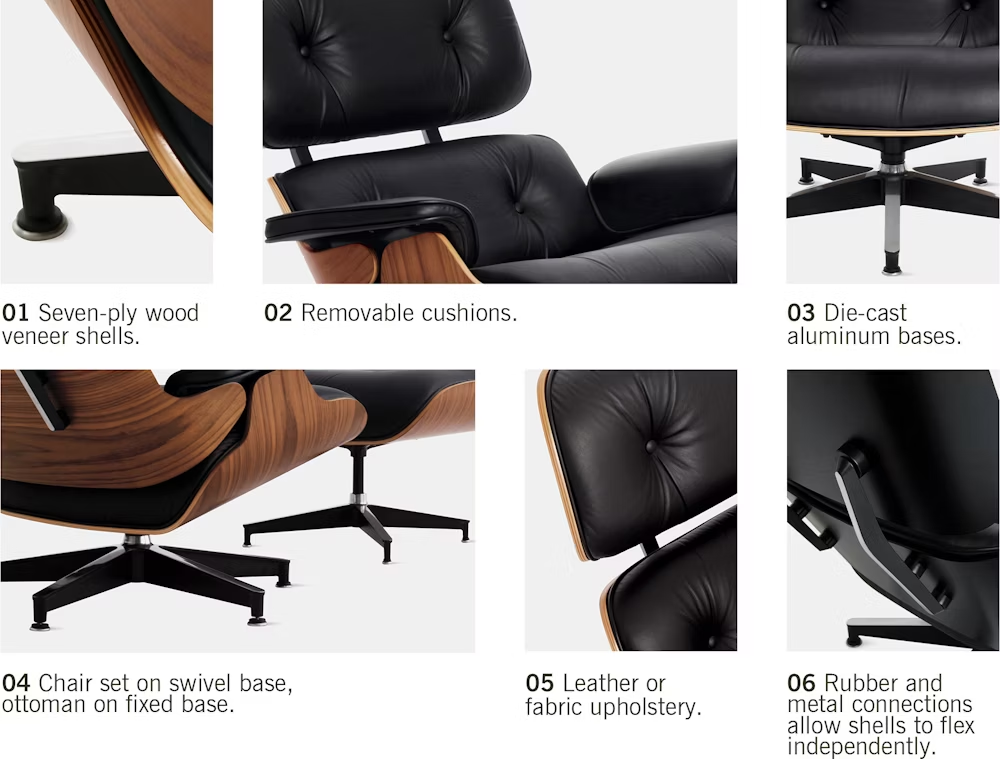
Why This Chair Works (Design, Comfort, Longevity)
Mid-century iconography aside, the Eames Lounge thrives because it solves real problems:
- Comfort without bulk. The three plywood shells cradle your back and head, while the separate, down-wrapped cushions float inside the shells—supportive but never stiff.
- Human-scale proportions. The pitch of the back and matching ottoman angle place your hips slightly below your knees, easing lower-back load for long reading sessions.
- Visual quiet. No loose slipcovers or oversized arms; the silhouette reads clean from every angle. In open-plan spaces, the chair carries like a piece of art, not a blocky seat.
Finish Choices: Leather, Veneer, and Base (The Looks That Never Miss)
Think of your finish selection as wardrobe building for your room. A few foolproof directions:
Leathers
- Classic Black (premium semi-aniline): Editorial and versatile. Pairs with gray, white, and walnut rooms; photographs with beautiful contrast.
- Chocolate / Espresso: Warmer read that loves brass lighting and natural stone.
- Camel / Tan: The “lived-in” look develops character quickly; incredible with oak floors, cream rugs, and black accents.
- White / Off-White: Gallery calm in bright interiors; best where you can commit to a gentle care routine.
Veneers
- Walnut: The archetypal mid-century vibe—distinct grain, rich tone. Works in almost every setting.
- Santos Palisander / Rosewood-style exotics: Dramatic, ribboned grain that turns the chair into the room’s focal point.
- White Ash / Lighter Oaks: Softer, Scandinavian calm; pair with pale textiles and matte black metal for balance.
- Black Ash: Graphic and contemporary, especially with black leather and chrome details elsewhere.
Base & Hardware
- Polished Aluminum: Classic,with crisp highlights under lamplight.
- Black Painted Aluminum: Disappears visually—use when you want the shells/leather to take the stage.
- Mixed (polished top, black legs): Subtle contrast that echoes mixed-metal rooms.
Cheat sheet: If your room leans cool and minimal, try black leather + walnut + polished base. For warm, textural spaces, camel leather + walnut (or light ash) + black base equals instant harmony.
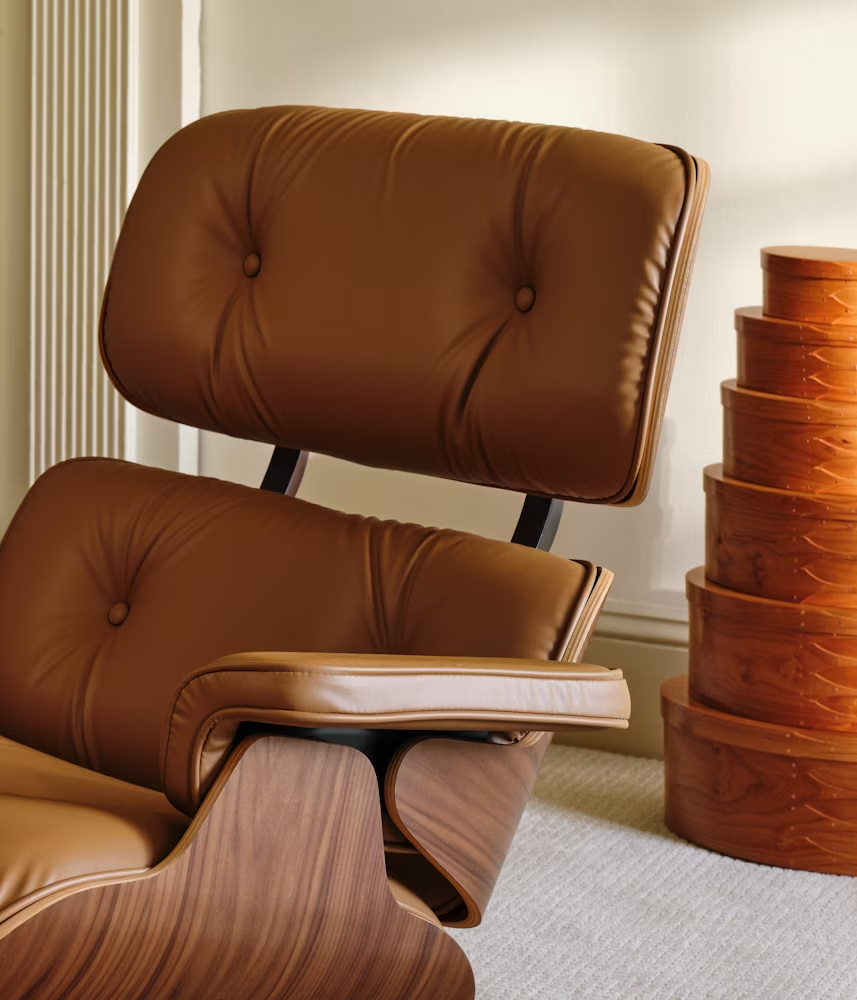
Placement Playbook: Where It Performs Best
The Eames Lounge is a swivel-base conversation piece—treat it accordingly.
- Reading Nook by a Window: Angle the chair 15–20° toward the view with the ottoman centered on the seat. Add a slim, arched floor lamp behind the chair so light washes across your book without glare.
- Opposite a Sofa: Create a diagonal across the coffee table. The low profile won’t block sightlines, and the swivel lets you pivot between TV and conversation.
- Corner Composition: Float the chair 8–12 inches off the walls to avoid “stuck in the corner” energy. A round rug (6–8′) under chair + ottoman frames the vignette.
- Home Office Reset: Park the chair outside camera frame for break mode. A side table at arm height becomes your laptop perch for casual reading.
Ergonomic tip: Align the ottoman so your knees can bend about 100–110°. Too far away strains hamstrings; too close pushes hips forward.
Shop Herman Miller Eames Lounge Chair and Ottoman
Lighting the Icon (Make the Plywood Glow)
The shell’s curves love directional, warm light. Use this two-fixture strategy:
- Grazing Floor Lamp: Place behind and to the side so light skims the veneer, revealing grain. A dome, cone, or drum shade works; 2700–3000K keeps the scene calm.
- Low Accent Light: A small table lamp on the side table (or a dimmable LED uplight on the floor) adds layered ambiance for evenings.
Avoid harsh overhead downlights that flatten the chair’s form. If overheads are non-negotiable, dim them and let the floor lamp do the sculpting.
Side Tables, Rugs, and Companions: Recipes That Always Work
- Side Table Height: Aim for within 1–2″ of the chair’s arm height, so a book or drink lands naturally. Round or softly square tables echo the chair’s organic geometry.
- Rugs: Low pile wool or wool-blend (subtle heathered tones) frames the vignette without fighting the veneer pattern. A 6–8′ round or a 5×8 rectangle works for chair + ottoman + table.
- Companion Seating: A compact, upright armchair across the coffee table creates conversation balance; let the Eames provide the lounge energy.
- Throw & Pillow: One small lumbar pillow for long reads, a lightweight throw folded on the ottoman for colder months—keep it minimal so the silhouette stays clean.
One Hybrid Block (Checklist + Guidance): 8-Step Setup in 10 Minutes
- Float: Pull the chair 8–12″ from walls or casework.
- Aim: Angle 15–20° toward the focal point (view, TV, fireplace).
- Center: Align ottoman so your shins rest comfortably; knees slightly open.
- Surface: Add a side table within a forearm’s reach.
- Light: Place a floor lamp to graze veneer; set warm bulb.
- Ground: Roll out a low-pile rug that frames all three pieces.
- Softness: Add one lumbar pillow (if needed) and a folded throw.
- Edit: Remove extras. The chair is the hero—negative space is your friend.
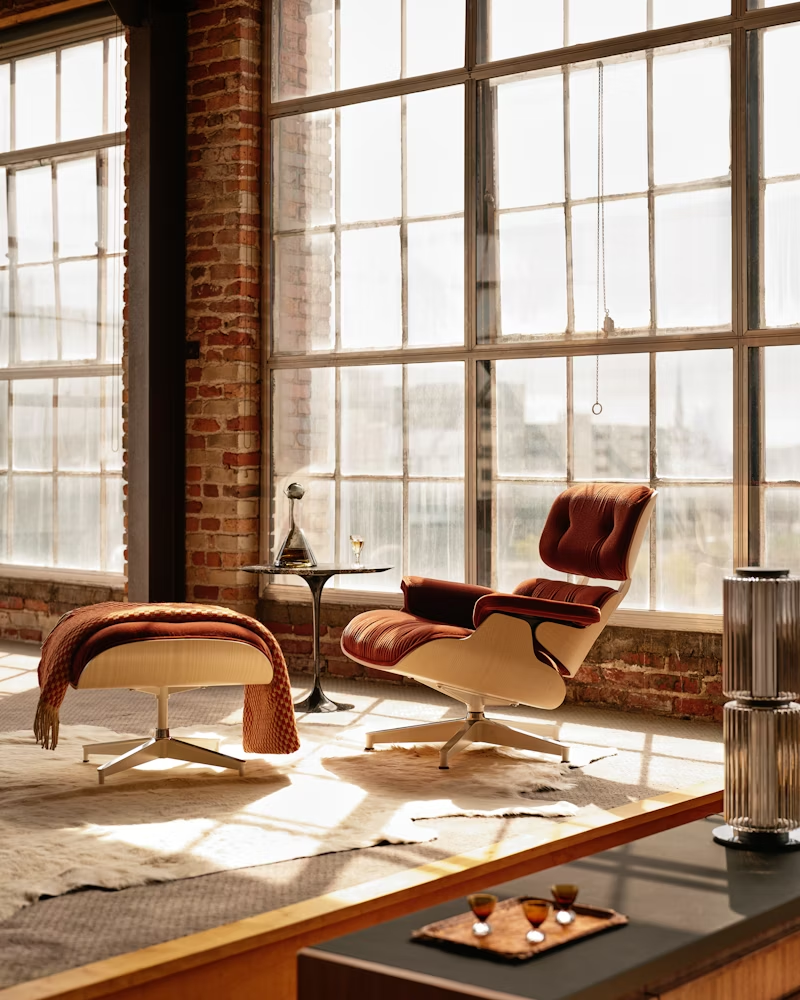
Leather & Veneer Care: Keep the Patina, Skip the Panic
Leather (semi-aniline & aniline basics):
- Weekly: Dust with a soft cloth; vacuum seams with a brush attachment.
- Spills: Blot immediately—don’t rub. For water, a dry cloth may be enough. For other spills, follow the maker’s care guidance for your leather type.
- Conditioning: 1–2× per year for aniline leathers; semi-aniline may need less. Test any product on an unseen area first.
- Sunlight: Rotate the chair occasionally if it sits in strong sun; UV causes leather to lighten and dry over time.
Veneer/Shells:
- Dust: Soft, dry cloth or barely damp microfiber; dry right away.
- Polish: Avoid silicone polishes; a quality wood-care product designed for finished veneers, used sparingly, maintains luster.
- Protect: Coasters on side tables prevent ring transfers that might touch shells when you swivel.
Base & Glides:
- Wipe metal with a damp microfiber; dry immediately.
- Check floor glides yearly; replace if worn to protect floors and maintain smooth swivel.
Shop Herman Miller Eames Lounge Chair and Ottoman
Styling for Different Interior Personalities
- Minimalist Loft: Black leather + walnut + polished base. Pair with a white boucle sofa, black cone floor lamp, pale rug—let the chair’s grain be the detail.
- Warm Modern: Camel leather + walnut + black base. Add linen curtains, travertine side table, and aged brass accents.
- Scandi-Calm: Off-white leather + white ash veneer. Keep metals matte black, textiles in oatmeal and stone.
- Moodier Library: Espresso leather + dark veneer + dark base. Layer a Persian or heathered charcoal rug, built-ins, and a brass pharmacy lamp.
Layouts in Real Rooms: Three Ready-Made Scenarios
1) City Living Room (12×18’): Place the chair by the window, ottoman centered, round rug underneath. Sofa across from a low media console; a round coffee table aligns with the chair’s geometry. Floor lamp behind the chair, side table to the right—instant reading corner that doubles as a hero shot from the entry.
2) Open-Plan Great Room: Float the Herman Miller Eames Lounge Chair and Ottoman on the edge of the seating zone to “soften” the transition to dining. Use the swivel to maintain flow; add a console table behind the sofa to visually anchor the cluster.
3) Bedroom Suite: Position the chair 3–4′ from the end of the bed, facing a window or fireplace. A small bookcase or record stand becomes the companion piece; ottoman doubles as a morning perch for tying shoes.
Troubleshooting: Fast Fixes for Common Snags
- Feels cramped in a corner? Pull the chair forward 8–12″, rotate slightly, and use a round rug to define a micro-zone.
- Too shiny/clinical? Add a heathered rug and a linen shade; choose a warmer bulb.
- Leather looks flat? Gently buff with a dry, soft cloth to wake up the surface; add a single textured pillow for contrast.
- Ottoman wanders? Place a non-slip rug pad or choose a rug with a bit of grip.
- Chair dominates the TV sightline? Shift it diagonally across the coffee table so it frames, rather than blocks, the view.

Long-Term Thinking: Why This Purchase Ages Well
Trend-proof lines, honest materials, and real comfort make the Eames Lounge a decades-long keeper. Because it looks finished from every angle, it adapts as you move apartments or restyle rooms—anchor piece in a living room now, library chair later, heirloom eventually. And unlike oversized loungers, its footprint is efficient; you get “big chair energy” without a giant rectangle eating the floor plan.
Conclusion
Great furniture earns the right to be in your daily path. The Herman Miller Eames Lounge Chair and Ottoman does that with a sculptural presence that’s surprisingly easy to live with: right-sized comfort, flexible finishes, and a silhouette that elevates its surroundings rather than overwhelming them. Choose a leather and veneer pairing that harmonizes with your space, float the chair so light can graze its curves, and keep the maintenance simple—dust, blot, protect from harsh sun. Do that, and your lounge corner becomes a ritual: sit, swivel, exhale. It’s design history you can actually relax in.
Shop Herman Miller Eames Lounge Chair and Ottoman
FAQ
- What size rug works under the Eames Lounge & Ottoman?
A 6–8′ round or a 5×8 rectangle typically frames chair + ottoman + side table without crowding. Ensure at least the front legs and ottoman sit on the rug. - How close should the ottoman be?
Close enough that your knees bend slightly and your shins rest comfortably—usually with the ottoman edge a few inches from the chair’s base. - Which finishes are most versatile?
Black leather with walnut veneer and a polished base is the timeless baseline. For warmer, textural rooms, camel leather with walnut and a black base reads luxurious and relaxed. - How do I light the chair for reading and display?
Use a warm floor lamp that grazes the veneer from behind/side, plus a small table lamp if you want layered evening light. Avoid harsh overheads. - What’s the simplest leather care routine?
Dust weekly, blot spills immediately, condition occasionally (especially for aniline leathers), and rotate away from strong sun. Always test care products in a hidden spot first. - Can I pair it with a sectional?
Yes. Place the chair near the chaise “foot” to complete a U-shape, keeping pathways open. The low back preserves sightlines to TV or windows. - Does it work in small apartments?
The footprint is efficient for the comfort provided. Float it slightly off the wall, use a round side table, and let the swivel reduce the need for extra seating. - How do I keep the look from feeling too mid-century themed?
Mix eras: stone or plaster side tables, linen shades, contemporary art, and natural woven rugs keep the vignette fresh and current.

